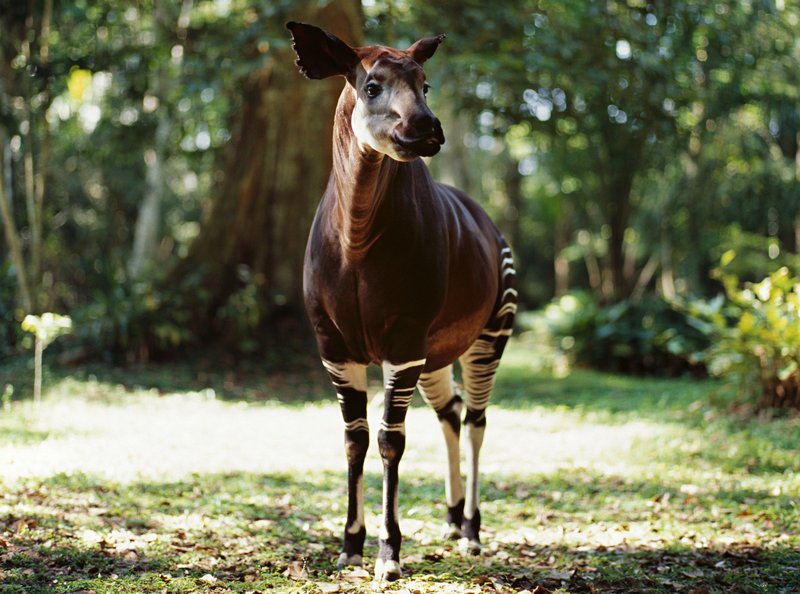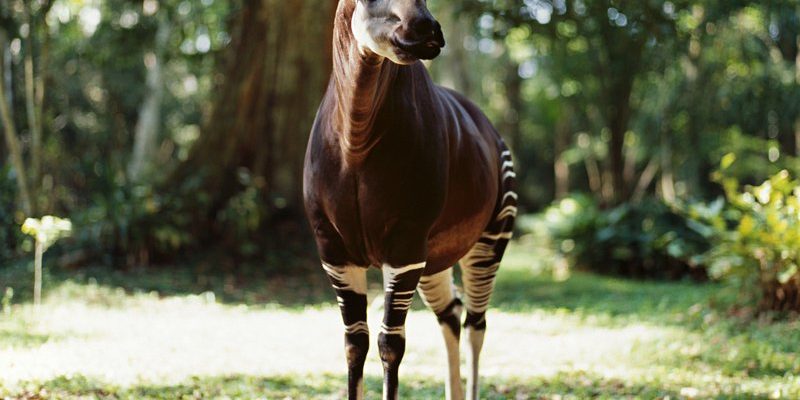
The okapi, often referred to as the “forest giraffe” due to its close relation to giraffes, is native to the dense rainforests of the Democratic Republic of Congo. When exploring the role of the okapi in its ecosystem, you’ll find that it’s not just about what it eats or how it looks. It’s about the connections it fosters within its environment. Just think of the okapi as a crucial piece of a puzzle; without it, the picture wouldn’t quite be complete. So, let’s dive in and see just how this incredible animal contributes to the beauty and balance of its habitat.
Understanding the Okapi’s Habitat
The okapi thrives in the dense rainforests of the Congo, a place rich in biodiversity. This lush environment provides everything the okapi needs, from food sources to shelter. The rainforests are home to countless plant species, many of which the okapi munches on. Think of the okapi as a selective gourmet, feasting on leaves, fruits, and twigs from trees like the wild fig and palms.
Additionally, the thick foliage serves as protection from predators. Although okapis are not typically preyed upon by larger animals, they still need to be cautious. Their unique camouflage helps them blend into the shadows of their forest environment. If you were walking through the rainforest, you might easily miss an okapi standing still amidst the trees.
Moreover, these animals have adapted to a quiet lifestyle to escape detection from potential threats. Their large ears help them hear even the slightest sounds, letting them be on high alert in the bustling forest.
The Okapi’s Diet and Feeding Habits
Okapis are herbivores, which means their diet consists solely of plant material. They’re particularly fond of leaves and fruits. This feeding behavior is crucial because it helps maintain plant growth in the ecosystem. When okapis eat leaves from certain trees, they encourage new growth, allowing other plants to thrive.
Now, you might be curious about how they forage for food in such a dense forest. They often use their long tongues—up to 18 inches!—to reach high branches or pull leaves off tough stems. Imagine using a tool that’s part hand, part tongue—how cool is that? This unique feeding technique allows them to access food that many other animals can’t, reducing competition for resources in their habitat.
In addition to eating, okapis play a role in seed dispersal. When they consume fruits, the seeds pass through their digestive system and eventually get deposited elsewhere through their droppings. This natural process helps to spread plant species throughout the rainforest, promoting biodiversity. It is a beautiful cycle of life that showcases how interconnected all living things truly are.
How Okapis Impact Biodiversity
Biodiversity refers to the variety of life in a particular ecosystem—and the okapi contributes significantly to this. By feeding on various plants and dispersing seeds, they help promote a healthy balance of flora and fauna in the forest. The more diverse the plant life, the more animals can thrive in that environment, creating a robust ecosystem.
When biodiversity is high, it helps stabilize the ecosystem. Plants can thrive due to increased genetic variation, which means they can better adapt to changes in the environment. More diverse plant life provides habitats and food sources for other animals, from insects to larger mammals. Thus, by simply being themselves, okapis indirectly support a wide network of life in their habitat.
Moreover, their presence helps maintain the forest’s structure. Many trees depend on certain animal species to help them grow and thrive, and the okapi is one such species. It’s like a natural gardening service, ensuring the health and vitality of the rainforest.
The Role of Okapis in Cultural Significance
Beyond their ecological role, okapis hold cultural significance for local communities. Indigenous peoples of the Congo often incorporate the okapi into their folklore and traditions. These stories often portray the okapi as a creature of mystery, representing the wild, untamed beauty of the forest.
Many people also view the okapi as a symbol of conservation efforts. As their habitat faces threats from deforestation and poaching, the plight of the okapi highlights the importance of protecting not just this unique animal, but also the entire rainforest ecosystem. By raising awareness about the okapi, conservation groups endeavor to promote sustainable practices that protect the forest and its diverse inhabitants.
This cultural connection helps foster a sense of community around conservation efforts. When local people see the okapi as a valuable part of their heritage, they are more likely to join in on efforts to protect their environment.
Threats to the Okapi and Its Ecosystem
Despite their significance, okapis face several threats that endanger their survival and the health of their ecosystem. Habitat loss is arguably the most significant issue; as forests are cleared for agriculture and logging, okapi populations decline. Without their forest home, these gentle creatures struggle to find enough food and shelter.
Poaching is another serious threat. Okapis are hunted for their meat and skin, and this illegal activity has driven their numbers down in recent years. With fewer okapis roaming the forests, the entire ecosystem feels the impact, as we discussed earlier regarding their role in seed dispersal and plant management.
Additionally, conflicts between humans and wildlife often arise as communities expand into okapi habitats. As people move closer to the forests, the delicate balance of the ecosystem can be disrupted. Local initiatives aimed at preserving the okapi’s habitat are crucial for ensuring that both people and wildlife can thrive.
Conservation Efforts for the Okapi
In recent years, various conservation organizations have stepped up efforts to protect the okapi and its habitat. The Okapi Conservation Project is one notable initiative that works to safeguard the okapi in the wild. Through community engagement, education, and habitat protection, these programs aim to create a sustainable future for both the okapi and the local people who share its habitat.
Educating local communities about the importance of the okapi and its role in the ecosystem is essential. Many programs focus on teaching sustainable practices, which help reduce deforestation and promote biodiversity. When communities understand how crucial the okapi is to their environment, they’re more likely to get involved in efforts to protect it.
Furthermore, international support plays a vital role in conservation efforts. Protecting the okapi is not just a local concern; it’s a global responsibility. By raising awareness through social media campaigns, documentaries, and fundraising efforts, people from all over the world can contribute to the cause. Every little bit helps, whether it’s spreading the word or providing financial support.
The okapi might not be as famous as some other African animals, but its role in the ecosystem is just as vital. By supporting plant life, maintaining biodiversity, and holding cultural significance, this unique creature anchors its rainforest home.
Protecting the okapi and its habitat isn’t just about saving one species; it’s about preserving a whole ecosystem that countless organisms depend on. Honestly, the okapi teaches us a valuable lesson about interconnectedness. When we take care of our natural world, we ensure that all its inhabitants—humans and wildlife alike—can thrive together. So next time you hear about the okapi, remember it’s not just a quirky animal; it’s an essential part of our planet’s health.

